Introduction: Which AI can create images
Artificial intelligence (AI) has made enormous progress in recent years and revolutionized numerous areas. One of the most fascinating areas of application is image generation. AI image generators are able to create stunning and realistic images that are often indistinguishable from real photographs. This technology has the potential to fundamentally change the way we perceive and create art, design, marketing and many other areas.
In this blog post, we will look at the question: Which AI can create images? We will provide a comprehensive overview of the various technologies and models that are used to generate images. We will also take a look at the most important developments and areas of application for this fascinating technology.
From the history and development of AI image generation to the different types of AI models and the most well-known AI image generators such as DALL-E and Midjourney - this article provides you with a detailed introduction to the world of AI-based image generation. Find out how these technologies work, what benefits and challenges they bring and what the future holds.
Join us on this journey and discover the possibilities offered by AI image generators and how they can change our visual world.
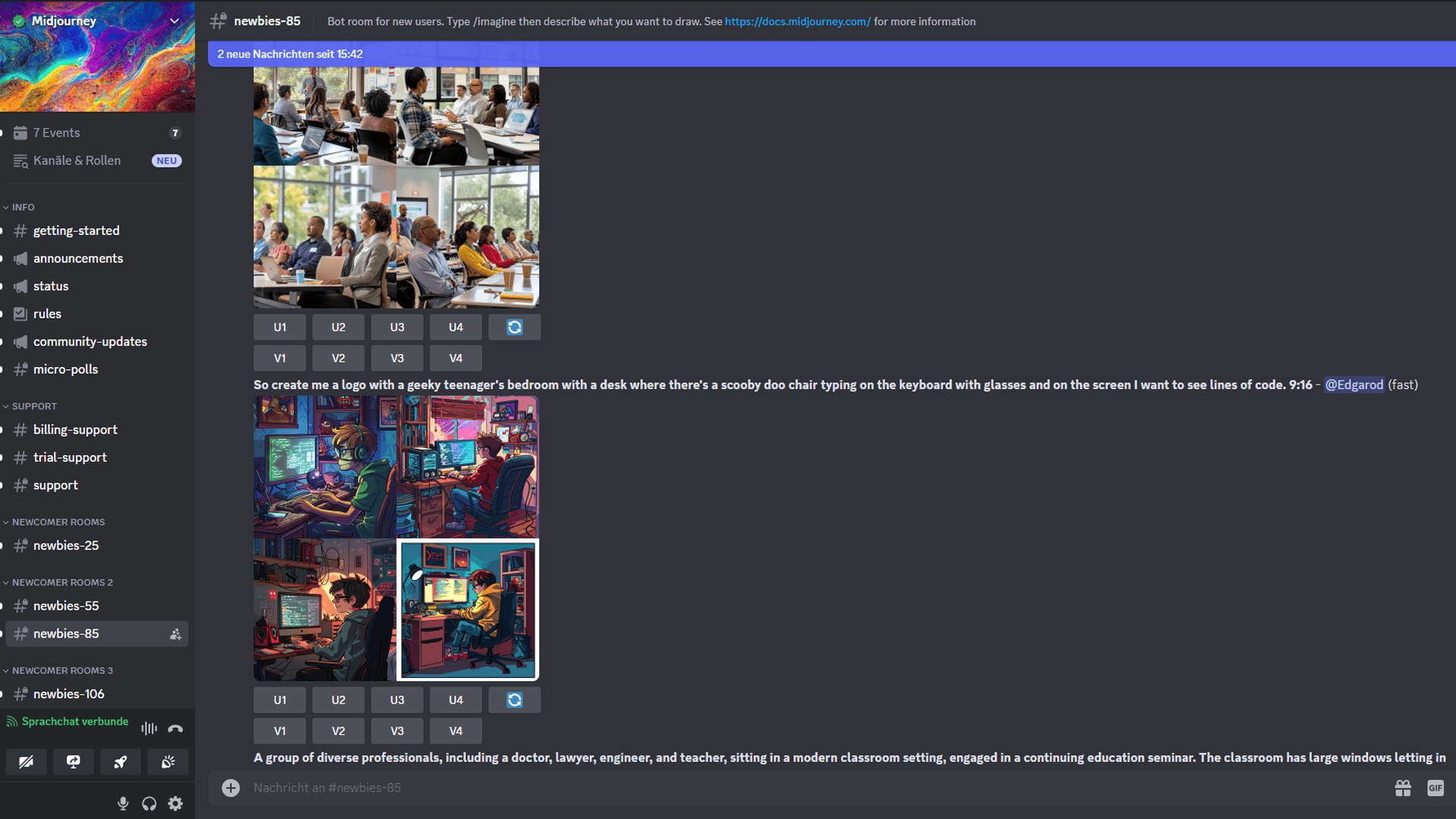
History and development of AI image generation
Earlier technologies and milestones
The history of AI image generation begins in the early days of computer art and artificial intelligence. In the 1960s, the first experiments with algorithmic art were carried out using simple programs to create abstract images. However, these early experiments were a far cry from the highly complex and realistic images that modern AI models can generate.
A significant milestone in the development of AI image generation was the introduction of artificial neural networks in the 1980s. These networks, inspired by the functioning of the human brain, enabled computers to recognize and reproduce complex patterns in data. In the following decades, neural networks were continuously improved and expanded, paving the way for more advanced image generation techniques.
Important developments and breakthroughs
A decisive breakthrough in AI image generation was the development of Generative Adversarial Networks (GANs) in 2014 by Ian Goodfellow and his colleagues. GANs consist of two neural networks - a generator and a discriminator - that compete against each other. The generator creates images, while the discriminator tries to distinguish between real and generated images. This competition leads to the generator producing increasingly realistic images.
GANs have revolutionized image generation and opened the door to numerous new applications. They have been used to create photorealistic images, artwork, 3D models and even deepfake videos. Advances in GAN technology have significantly improved the quality and variety of images generated.
Another notable model is DALL-E, which was introduced by OpenAI in 2021. DALL-E is based on the concept of transformer architecture and can create realistic images from textual descriptions. It combines the capabilities of neural networks with natural language processing to generate images that are both creative and technically impressive.
Modern technologies and current trends
Today, there are different types of AI models for image generation, including autoregressive models and diffusion models. These models have their own strengths and areas of application, and research in this area is extremely dynamic.
Autoregressive models, such as PixelCNNs and PixelRNNs, generate images pixel by pixel, taking into account the context of neighboring pixels. These models have shown that they are capable of generating very detailed and coherent images.
Diffusion models are another exciting development in AI image generation. They work by applying a process of iterative refinement, where a simple noise is gradually transformed into a realistic image.
The combination of these different techniques and the continuous improvements in the underlying algorithms and computing resources have resulted in AI image generation being at an impressive level today. From artistic creations to practical applications in advertising and media production - the possibilities are almost limitless.
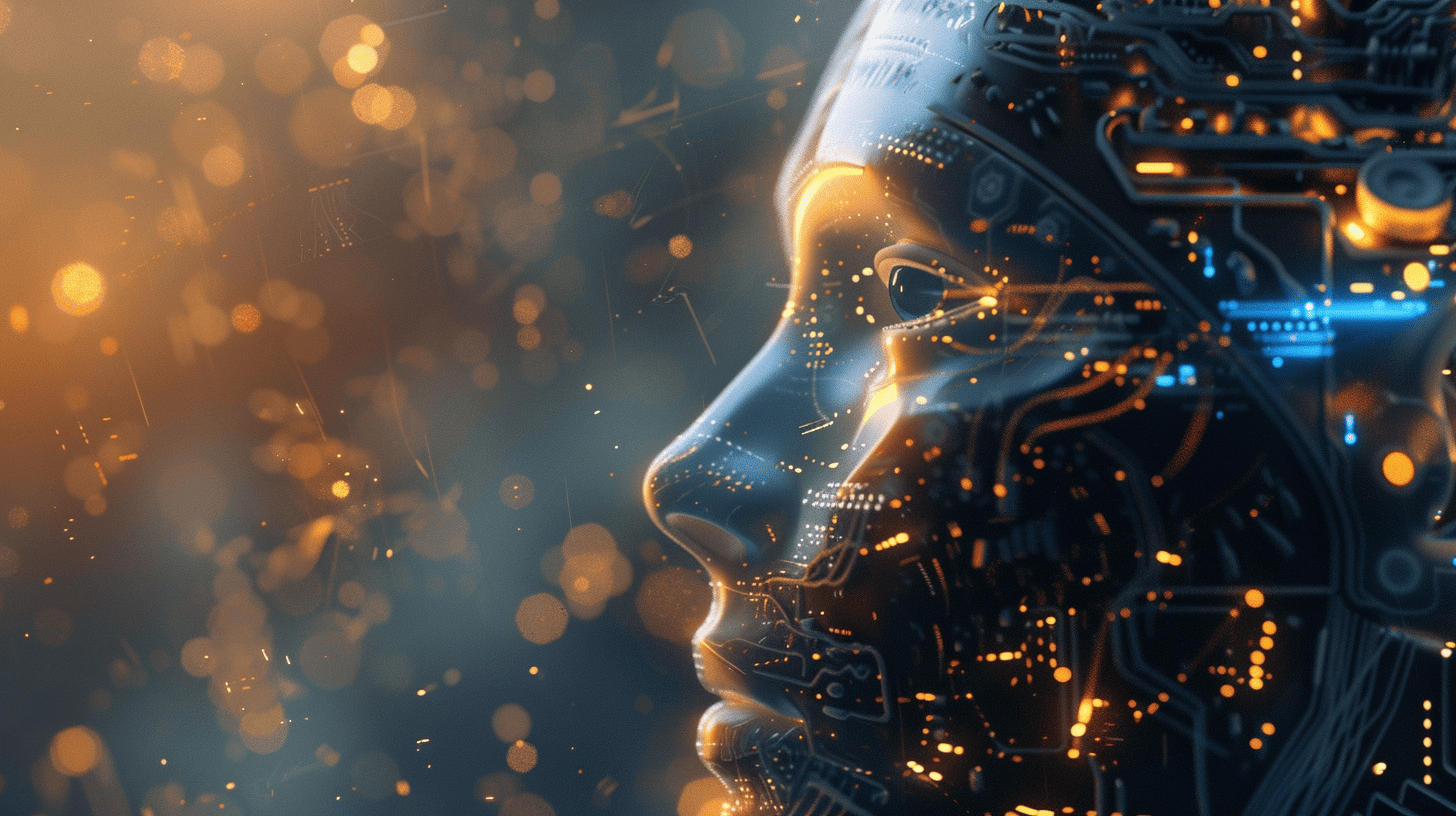
Conclusion
The history of AI image generation shows a continuous development from simple algorithmic approaches to highly complex neural networks. With each new technology and breakthrough, the boundaries of what is possible expand. Today, AI image generators are a powerful tool that is revolutionizing the way we create and use images. The future promises even more innovations and applications in this exciting field.
Types of AI for image generation
The world of AI image generation is diverse and includes different types of models and techniques. These models differ in the way they work, their strengths and their areas of application. Here are the most important types of AI for image generation:
Generative Adversarial Networks (GANs)
Generative Adversarial Networks (GANs) are one of the best known and most frequently used techniques for image generation. GANs consist of two main components: the generator and the discriminator.
- Generator: This part of the network generates images from random noise. The aim of the generator is to create images that are as realistic as possible.
- Discriminator: The discriminator evaluates whether an image is genuine (from the training data) or was created by the generator. It attempts to recognize the generated images.
These two networks work against each other in a game in which the generator tries to deceive the discriminator, while the discriminator learns to make better distinctions. This competition leads to the generator producing increasingly realistic images over time.
Examples of GANs:
- StyleGAN: Developed by NVIDIA, known for creating extremely realistic faces and other complex images.
- BigGAN: A powerful GAN model that can produce large, high-quality images.
Autoregressive models
Autoregressive models generate images pixel by pixel by calculating the probability of each pixel based on the previous pixels. These models are able to generate very detailed and coherent images because they take into account the context of all previous pixels.
Examples of autoregressive models:
- PixelCNN: A model that generates images by sequentially predicting pixel values.
- PixelRNN: Similar to PixelCNN, but uses recurrent neural networks to predict pixels.
Diffusion models
Diffusion models are a newer class of models based on an iterative refinement process. They start with an image consisting mainly of noise and gradually transform it into a realistic image. This is done through a series of iterations in which the model gradually reduces the noise and adds detail.
Examples of diffusion models:
- DDPM (Denoising Diffusion Probabilistic Models): A model that uses the diffusion process to generate images by gradually removing noise.
Other relevant approaches
In addition to the main models mentioned above, there are other approaches and technologies for image generation that are also noteworthy:
- Variational Autoencoders (VAEs): VAEs use probabilistic approaches to generate images and are known for their ability to produce continuous and smooth image spaces.
- Transformers: Originally developed for natural language processing, transformer models are increasingly being used in image generation, especially in combination with other techniques.
Conclusion
The different types of AI for image generation offer different approaches and possibilities for creating realistic and creative images. From competition-based GANs to sequential autoregressive models and iterative diffusion models, each technique has its own strengths and is suitable for different application areas. The continuous development and combination of these approaches promises to further improve the quality and diversity of AI-generated images.
Best AI for generating images:
The ongoing development of AI has produced a number of remarkable models and tools that are used to generate images. These models use advanced algorithms to create impressive and realistic images. Here are some of the most popular AI models and tools for image generation:
DALL-E
DALL-E is an AI model developed by OpenAI that is able to create realistic images from text-based descriptions. The model is based on the Transformer architecture and combines the power of language processing with image generation. DALL-E can not only represent simple objects and scenes, but also generate creative and unusual combinations that are often surprising and fascinating.
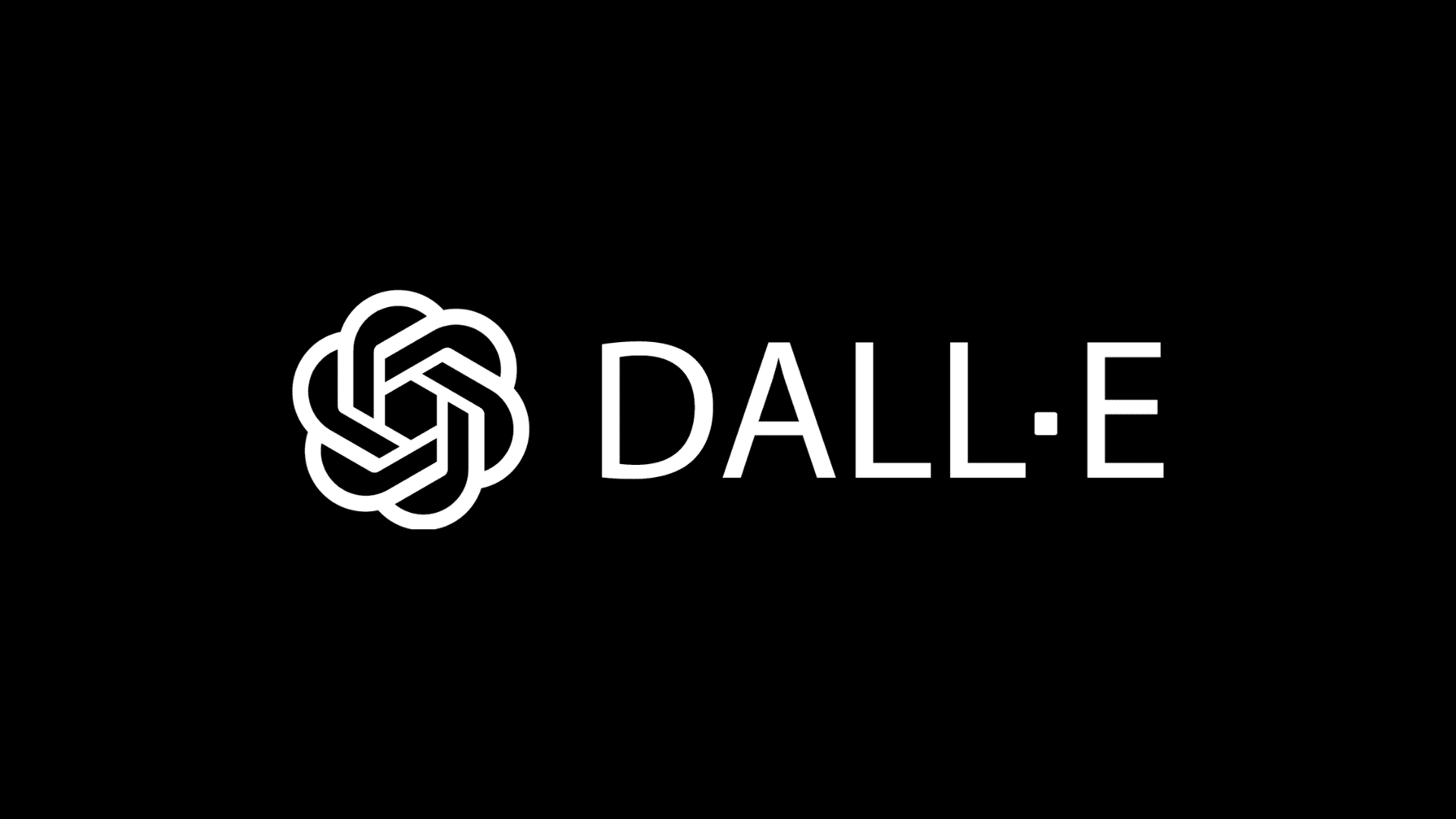
Main features:
- Creation of images from textual input.
- High level of creativity and ability to visualize complex concepts.
- Support for a variety of image styles and themes.
Midjourney
Midjourney is an AI tool that specializes in the creation of artistic and aesthetically pleasing images. It is widely used by artists and designers to create inspiring and unique visual content. Midjourney uses advanced algorithms to generate stunning artwork from simple inputs.

Main features:
- Focus on creative and artistic image generation.
- User-friendly interface for ease of use.
- Wide range of styles and effects.
Stable diffusion
Stable diffusion is another advanced image generation model based on the diffusion technique. This model generates images through an iterative refinement process in which noise is gradually reduced until a realistic image is obtained. Stable diffusion has proven to be particularly effective for creating high-resolution and detailed images.
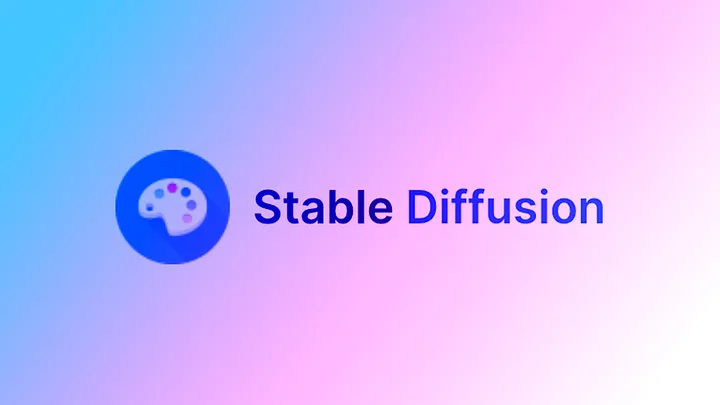
Main features:
- Use of diffusion technology for image generation.
- High image quality and attention to detail.
- Efficient process to reduce noise and refine details.
DeepArt
DeepArt is a popular tool that uses AI to transform photos into artworks in the style of famous artists. It uses neural networks to extract the stylistic features of an artwork and apply them to any photo. DeepArt is particularly popular with users who want to transform their photos into unique works of art.
Main features:
- Transform photos into works of art in the style of famous artists.
- Simple operation through upload and selection of styles.
- High artistic quality of the generated images.
RunwayML
RunwayML is a versatile platform that provides a wide range of AI tools, including those for image generation. The platform allows users to combine different models and algorithms to create customized image generation solutions. RunwayML is aimed at both artists and developers and offers an intuitive user interface and extensive integration options.
Main features:
- Wide range of AI tools for image generation and beyond.
- Intuitive user interface and easy integration.
- Support for the creation of customized solutions.
Artbreeder
Artbreeder is a platform based on the use of GANs to create and combine images. Users can mix and match existing images to create new, unique creations. Artbreeder is often used for creating character designs, landscapes and other creative projects.
Main features:
- Mixing and adaptation of existing images.
- User-friendly platform with an active community.
- Wide range of applications from character designs to landscapes.
Conclusion
The variety and performance of the AI models and tools available today for image generation is impressive. From DALL-E and Midjourney to Stable Diffusion, DeepArt, RunwayML and Artbreeder - these models and platforms offer a wide range of possibilities for creating images. They open up new creative horizons and are used in art, design, marketing, entertainment and many other areas. The continuous development of these technologies promises even more impressive results and extended application possibilities in the future.
Areas of application for AI-generated images
The ability of AI to create impressive and realistic images has opened up numerous areas of application. These range from creative and artistic projects to commercial and scientific applications. Here are some of the most important applications of AI-generated images:
Art and design
AI image generation is having a huge impact in the art and design world. Artists and designers are using AI tools to create new and innovative artworks that were not possible before. AI can help overcome creative blocks by providing inspiring ideas and unique styles. From creating digital artworks to generating concept designs for products and fashion, the possibilities are almost limitless.
Examples:
- Digital artworks and illustrations
- Fashion design and product concepts
- Architectural visualizations
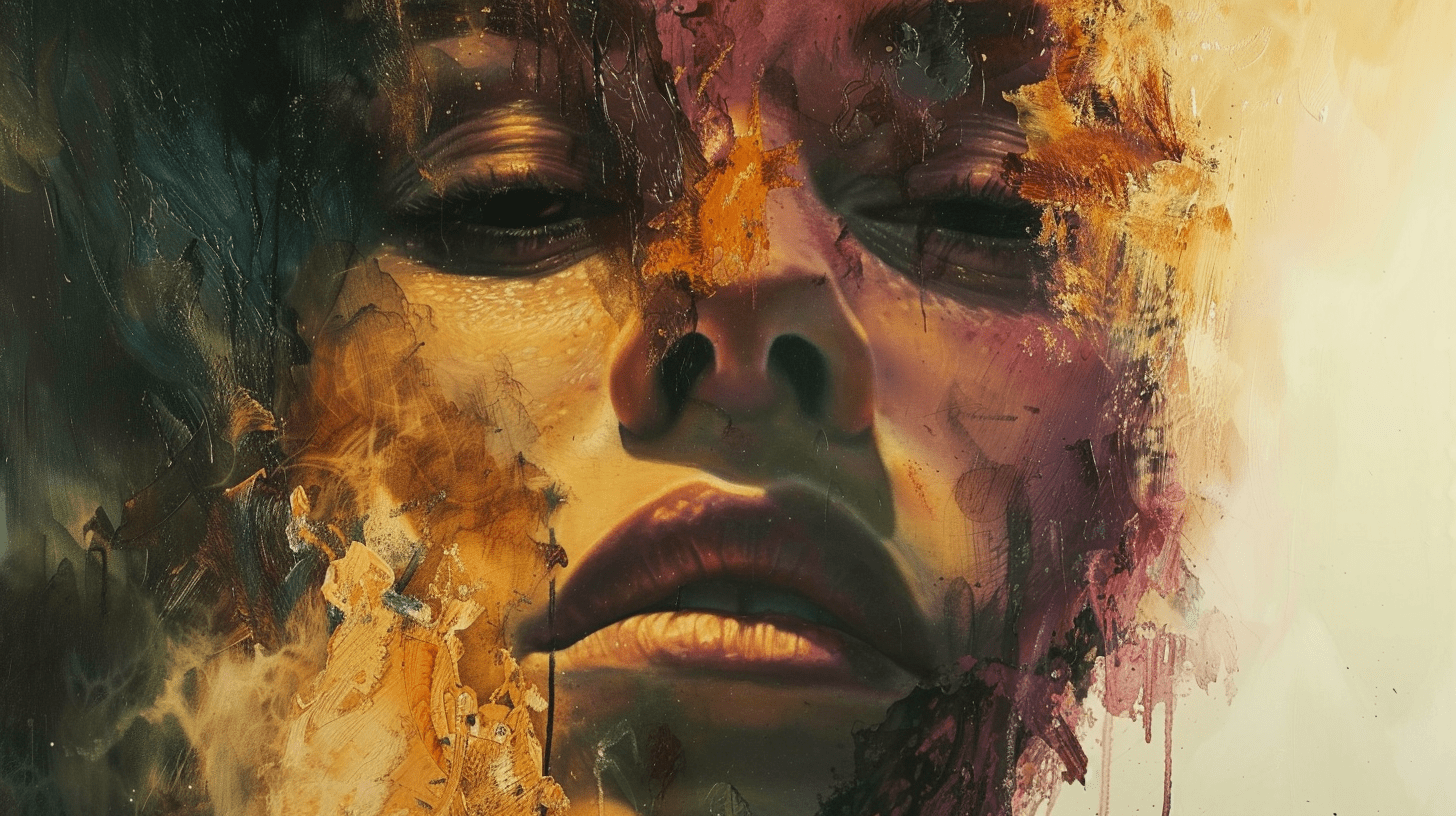
Marketing and advertising
Visuals play a crucial role in marketing and advertising. AI-generated images can help to create eye-catching and memorable campaigns. Companies can use AI to generate personalized advertising images that are tailored to the preferences and needs of their target groups. AI models can also provide fast and cost-effective solutions for the creation of advertising graphics and videos.
Examples:
- Advertisements and social media campaigns
- Product images and mockups
- Visual content for websites and newsletters
Entertainment and media
In the entertainment and media industry, AI-generated images offer new possibilities for creative content. From film and game production to the creation of virtual worlds and characters, AI can speed up production and improve quality. Especially in game development and the film industry, AI models can be used to create realistic scenes and characters, increasing creative flexibility and efficiency.
Examples:
- Character design and animations
- Virtual worlds and backgrounds for video games
- Special effects and CGI in films
Science and research
AI-generated images have also found significant applications in science and research. AI can be used to visually represent scientific data, create simulations and illustrate complex concepts. Especially in the fields of medicine and astronomy, AI-generated images have the potential to provide important insights and improve the visualization of research results.
Examples:
- Medical imaging and diagnostic support
- Simulations and visualizations in physics and astronomy
- Illustrations and models for scientific publications
Education and training
AI-generated images can also play an important role in education. They can be used to make teaching materials clearer and easier to understand. From interactive learning modules to virtual realities for training, AI offers innovative ways to convey learning content and improve learning.
Examples:
- Interactive learning modules and e-learning platforms
- Virtual training environments
- Teaching materials and illustrations for textbooks
Individualized content
Another exciting area of application is the creation of individualized content. AI can generate images based on users' preferences and behaviour, enabling personalized experiences. This is particularly useful in areas such as e-commerce, where personalized product images can support purchasing decisions.
Examples:
- Personalized shopping experience in e-commerce
- Customized avatars and profile pictures for social media
- Customized content for individual user experiences
Conclusion
The areas of application for AI-generated images are diverse and extend far beyond the traditional boundaries of image processing. Whether in art and design, marketing and advertising, entertainment and media, science and research, education and training or in the creation of individualized content - AI image generators offer innovative and efficient solutions. The continuous development of these technologies will certainly open up further exciting applications and possibilities that will enrich and transform our visual world.
Advantages and challenges of AI image generation
Advantages
AI image generation offers numerous advantages that make it an attractive technology for various application areas. Here are some of the most important advantages:
- Creativity and innovation: AI image generators can create new and innovative designs that are often beyond human imagination. They enable artists and designers to explore new creative avenues and create unique works of art.
- Efficiency and speed: AI can create images much faster than traditional methods. This saves time and resources, especially in industries such as advertising and media where fast production is important.
- Cost savings: The use of AI can significantly reduce the cost of creating images. Companies no longer have to invest in expensive photo shoots or illustrations, but can generate high-quality images at a fraction of the cost.
- Personalization: AI enables the creation of personalized content that is tailored to the individual preferences and needs of users. This is particularly beneficial in marketing and e-commerce, where personalized experiences can increase customer loyalty.
- Accessibility: With AI image generators, even people without artistic or technical knowledge can create impressive images. This democratizes access to creative tools and enables more people to realize their visual ideas.
Challenges
Despite the many advantages, there are also challenges and ethical considerations that need to be taken into account when using AI to generate images:
- Copyrights and plagiarism: One major problem is the issue of copyright. AI models are often trained with large quantities of images that may be protected by copyright. There is a risk that generated images are plagiarized or unauthorized reproductions.
- Ethical concerns: The ability of AI to create realistic images has ethical implications, especially in the context of deepfakes. Deepfake images and videos can be used to spread misinformation and manipulate public opinion.
- Quality control: Although AI can create impressive images, the quality is not always consistent. Sometimes generated images can have errors or inconsistencies that would be avoided by a human artist.
- Loss of jobs: Automation through AI may lead to a decline in demand for traditional artistic and creative professions. This could jeopardize jobs in these areas and have an economic impact.
- Technical requirements: The development and implementation of AI image generators requires significant technical knowledge and resources. Small businesses or individuals may not have the resources to effectively utilize these technologies.
Conclusion
AI image generation offers immense advantages in terms of creativity, efficiency, cost savings and personalization. It opens up new opportunities for artists, designers, marketers and many other industries. At the same time, however, challenges such as copyright issues, ethical concerns, quality control, potential job loss and technical requirements need to be carefully considered.
By understanding both the benefits and challenges of AI image generation, we can use this technology responsibly and effectively. This will allow us to fully exploit its potential while minimizing the associated risks. Ongoing research and discussion on the ethical and practical aspects will be crucial to ensure the sustainable and positive development of this fascinating technology.
How to get started with AI image generation
Access to the tools
Getting started with AI image generation first requires access to suitable tools and platforms. Here are some steps to get started with AI image generation:
- Selection of the right platform: There are various platforms and tools for AI image generation that offer different functions and user-friendliness. Well-known platforms are DALL-E, Midjourney, Stable Diffusion and RunwayML. Consider which platform best suits your needs and which functions you require.
- Registration and access: Most platforms require registration. Some offer free trials or limited free usage options, while others have paid plans. Sign up on the selected platform and explore the available options.
- Installation of software (if required): Some AI models and tools require software to be installed on your computer. This is especially true for open source models such as Stable Diffusion, which you can run locally. Make sure that your computer meets the technical requirements and follow the installation instructions of the respective platform.
First steps and best practices
Once you have access to the tools, you can start creating AI-generated images. Here are some first steps and best practices to help you get started:
- Exploring the user interface: Take your time to explore the user interface of the tool. Learn how to make entries, adjust settings and save generated images. Many platforms offer tutorials and support materials to help you get started.
- Input of prompts: With most AI image generators, you enter textual descriptions (prompts) that describe the desired image. Be specific and detailed in your input to get the best results. Experiment with different descriptions and keywords to explore the capabilities of the tool.
- Customization and fine-tuning: Use the available customization options to further refine the generated images. Many tools offer settings for style, color, detail and other parameters. Adjust these settings to achieve the desired results.
- Iteration and feedback: AI image generation is often an iterative process. Try out different inputs and settings to see how the tool reacts. Use feedback loops to refine your inputs and improve the results.
- Use of templates and examples: Many platforms offer templates and sample prompts that can help you better understand how the tool works. Use these resources to get inspired and develop your own ideas.
Practical applications
Once you have familiarized yourself with the basic functions, you can use AI image generation in various practical applications:
- Creation of marketing materials: Create engaging banner ads, social media posts and product images. Use the personalized options to create content that appeals to your target audience.
- Design of artworks and illustrations: Use AI to create unique artworks and illustrations. Experiment with different styles and techniques to realize your creative vision.
- Development of prototypes and concepts: Create visual prototypes and concept designs for products, architecture or fashion. AI image generators can help you to quickly visualize and present your ideas.
- Support for scientific and educational projects: Use AI to visualize scientific data or to create vivid teaching materials. AI-generated images can make complex concepts easier to understand and support learning.
Conclusion
Getting started with AI image generation is easier than it might seem at first glance. With the right tools and a little experimentation, you can achieve impressive results. Use the resources and best practices available to continuously improve your skills and take full advantage of the many possibilities of AI image generation. Whether for creative projects, commercial applications or scientific visualizations, AI image generators give you the tools to bring your ideas to life.
Future prospects for AI image generation
AI image generation has made remarkable progress in recent years, and the future of this technology promises even more exciting developments. Here are some of the key trends and potentials that could shape the future of AI image generation:
Potential developments and trends
- Improved realism and quality: As research and development progresses, AI models are getting better and better at creating realistic, high-quality images. Future models may be able to create even more detailed and lifelike images that are almost indistinguishable from real photographs.
- Integration of multimodal approaches: Combining different types of data (e.g. text, audio and image) in multimodal models could take AI image generation to a new level. Models such as DALL-E, which use text-to-image generation, could be further developed to include audio or video data, leading to even more creative and interactive applications.
- Real-time generation and interactivity: The ability to generate images in real time and design them interactively could enable revolutionary applications. Real-time illustrations in video games, dynamic adjustments in virtual reality environments or interactive art installations that react to user interactions are all conceivable.
- Personalized AI models: Future developments could make it possible to create personalized AI models that are tailored to a user's individual style and preferences. This could be particularly useful in art, design and marketing, where customized content offers significant added value.
- Increased accessibility: The accessibility of AI image generation technologies will continue to increase, meaning that non-technical users can also benefit from these tools. User-friendly interfaces and low-cost options could give more and more people access to powerful image generation tools.
Effects on various sectors
- Creative industries: The creative industries will benefit greatly from advances in AI image generation. Artists and designers will be able to explore new creative possibilities, while production processes in the film, fashion and advertising industries will become more efficient and cost-effective.
- Marketing and advertising: AI-generated images will play a key role in marketing and advertising, especially in the creation of personalized and targeted campaigns. Companies can make their messages more effective and appealing, leading to higher customer loyalty and better conversion rates.
- E-Commerce: In e-commerce, AI-generated images can be used to create customized product images and previews. This improves the shopping experience for customers and can lead to higher sales figures.
- Education and science: In education and science, AI-generated images will contribute to the visualization of complex concepts and data. This facilitates learning and the understanding of scientific results, especially in fields such as medicine, physics and astronomy.
- Entertainment and media: The entertainment and media industry will benefit from interactive and dynamic content made possible by AI image generation. Virtual worlds, games and films could become even more immersive through the integration of real-time generation and interactive elements.
Ethics and responsibility
With advances in AI image generation also come important ethical and legal considerations. It is crucial that developers and users of these technologies take responsibility and ensure that their use is ethical and legally sound. Issues such as copyright, data protection and the prevention of misuse (e.g. deepfakes) must be actively addressed.
Conclusion
The future of AI image generation is promising and full of potential. As technology advances and integration into various industries increases, AI-generated images will become more realistic, interactive and personalized. Ongoing research and development will continue to drive these advances, while ethical and legal challenges must be overcome. AI image generation is on the cusp of a new era that will permanently change our visual world.
Conclusion
AI image generation has become one of the most fascinating and versatile applications of artificial intelligence. It offers an impressive range of possibilities that go far beyond what can traditionally be achieved by human artists and designers. From art and design to marketing, advertising, science and education, the applications are diverse and promising.
Summary of the most important points
- Technological basics: We have learned about the different types of AI for image generation, including Generative Adversarial Networks (GANs), autoregressive models and diffusion models, each offering unique advantages.
- Known models and tools: Models such as DALL-E, Midjourney and Stable Diffusion are among the leading AI image generators that can produce impressive and realistic images.
- Wide range of applications: The areas of application for AI-generated images are wide-ranging and include art, design, marketing, advertising, science, research and more.
- Advantages and challenges: While AI image generation offers numerous benefits such as efficiency, creativity and cost savings, there are also challenges and ethical concerns that need to be considered.
- Future prospects: The future of AI image generation promises further advances in realism, interactivity and personalization, while improving accessibility for all users.
Why AI image generation is important
The importance of AI image generation lies not only in its ability to create stunning visual content, but also in its potential to transform entire industries. By automating and improving creative processes, companies and individuals can work more efficiently and innovatively. AI image generation also opens up new creative possibilities and makes advanced image processing techniques accessible to a wider user base.
Final thoughts
AI image generation is at the forefront of a new era in digital art and technology. With continued advancements and increasing integration into various fields, this technology will have a lasting impact on our visual world. However, it is important that we use this power wisely and responsibly. By considering the ethical and legal aspects, we can ensure that the benefits of AI image generation are used for the good of all.
The journey of AI image generation has only just begun, and the coming years promise even more exciting developments and innovations. Whether you are an artist, designer, scientist or simply a technology enthusiast, the possibilities offered by AI image generators are endless and beg to be explored.